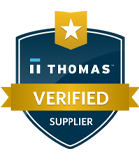If you are new to coding and marking, batch coding can feel like a small detail that carries big consequences. It ties your production run to materials, machines, dates, and inspections. It satisfies customer requirements and supports recalls. Most importantly, it needs to be clear, consistent, and fast to apply on whatever you make, whether that is metal parts, PET bottles, glass jars, film pouches, or cartons. This guide explains what batch coding is, how it differs from barcodes and lot codes, what it looks like across industries, and how to choose and apply crisp codes with reciprocating and dot or spot systems on porous and non porous surfaces.
What is batch coding?
Batch coding is the practice of printing a short, human readable code on each product or package that identifies a specific production run. A batch can mean a shift, a blend, a tank, a pallet group, or a time window on a continuous line. You define the batch boundaries based on your process and quality plan. The batch code then links finished items to their process data, materials, and records.
What does a batch code do?
A batch code supports traceability. It allows you to:
- Trace raw materials and components back to suppliers.
- Isolate and respond to quality issues without over recalling unaffected goods.
- Prove production timing for warranty and compliance audits.
- Coordinate inventory rotation with first in first out and date based controls.
- Communicate clearly with customers and inspectors during investigations.
In short, a good batch code makes it fast to answer what, where, when, and how a product was made.
How does a batch code look?
There is no single format. Most factories use a short code that is easy to read and verify at a glance. Common patterns include:
- Alphanumeric blocks: B1234, 23A07, L0457.
- Date plus shift: 240601 A, 24JUN01 2.
- Plant plus line plus time: P3 L2 14:35.
- Supplier or blend references when required by customers.
On food and beverage, you often see a code near the date stamp on a lid, shoulder, neck, or cartoned panel. On industrial goods, codes appear on a flange, end cap, nameplate area, or carton panel. The font is simple, usually 1.5 mm to 6 mm character height, with high contrast ink.
Is a batch code the same as a barcode?
No. A batch code is typically human readable text. A barcode or 2D code is machine readable, encoded as bars or dots. You can represent a batch in a barcode, but the printed batch text remains valuable for quick visual checks and manual processes. Many lines use both: a simple text batch code for people and a barcode for automated scanning.
What is a lot code? Does lot code mean expiration date?
Lot code and batch code are often used interchangeably. Both refer to the identifier for a defined production run. An expiration date is different. It indicates the last recommended use or sale date. Your print area might show both on the same line, for example: LOT 24A06 EXP 2025 01 15. The lot or batch code ties the item to production history. The expiration date ties it to shelf life and stability.
How to write a batch code
Keep it short, legible, and meaningful to your team. A simple structure that includes a date element and a small number of process identifiers works well:
- YYMMDD plus shift: 240601 A.
- Julian day plus line: 152 2.
- Work order segment plus time window: WO781 14:00.
Avoid symbols that clog with ink or confuse readers. Use high contrast characters and a consistent position on the product so operators and inspectors know where to look.
Regulatory and traceability drivers at a glance
In the United States, FDA and USDA regulated products generally require clear identification of the lot or batch and the date or date code that supports traceability and recalls. Guidance varies by product category. For packaged foods, dietary supplements, and beverages, the agency expects legible coding that allows you to trace and remove affected units rapidly. Medical devices and some components have additional labeling standards. This article does not provide legal advice. The practical takeaway is consistent: choose a code format and placement that is legible, durable through your distribution environment, and documented in your
quality system.
Surfaces and scenarios you will likely face
- Metals: smooth painted housings, plated caps, cans, stamped parts. Non porous surfaces benefit from quick drying ink and precise, light contact to prevent smearing. For curved cans, a compact print zone on
- the rim or bottom panel is common.
- Plastics: HDPE, LDPE, PP, PET, PVC. Surface energy varies, so ink selection matters. Primed or flame treated areas improve adhesion. PET bottles and HDPE jugs often take a shoulder or neck code.
- Glass: jars and vials prefer small characters on the shoulder or heel. Non porous glass needs fast dry inks or pigmented options for contrast.
- Films: pouches and flow wrap need crisp, short codes that resist rub during form fill seal and downstream conveying.
- Paper and board: porous cartons accept a variety of inks and allow larger characters if space permits.
If you want to see real world placements and options, this overview of product traceability is a useful starting point: product traceability.
Applying crisp batch codes with reciprocating and dot or spot systems
Reciprocating code marking machines use a controlled mechanical stroke. The marking head advances, touches the product or package with a light, repeatable action, and retracts. That motion delivers sharp characters with minimal dwell time. Dot or spot systems apply precise, contact based marks for small footprints or logos. Both are proven on porous and non porous substrates and are well suited to high uptime environments.
Key features that simplify daily work:
- Quick drying ink options: fast set on metals, plastics, and glass to reduce smears and transfer.
- Sealed ink system: protects ink from contamination, keeps viscosity stable, and enables fast startup at shift change.
- Quick change reservoirs: swap colors or formulas in minutes to reduce downtime between jobs.
- Removable marking heads: change character sets, logos, or heights without full teardown.
- Any orientation mounting: integrate in tight spaces, vertical or horizontal, top down or side print.
If you are exploring compact, reliable hardware for lot and batch imprinting on continuous lines or cells, see batch coding for a look at reciprocating coders designed for this task.
Choosing character sizes and rubber type character sets
- Character height: match to viewing distance and space. For bottles, jars, and small parts, 1.5 mm to 3 mm is common. For cartons and outer wraps, 3 mm to 6 mm improves readability. If operators read codes at arm’s length, choose 3 mm or larger.
- Typeface and thickness: simple block fonts print cleanly, especially on non porous materials. Avoid ultra condensed sets if you run fast line speeds or uneven surfaces.
- Content flexibility: set up alphanumeric kits with the digits 0 to 9, letters A to Z, and a few separators like slash or space. Pre arrange common text, such as LOT, EXP, MFG, to speed changeovers.
Integration tips for in line and benchtop setups
- In line: mount close to a product guide or hard stop to control contact position. Use sensors to trigger the reciprocating stroke as the product arrives. Keep the head aligned square to the surface to maintain even
- print. Protect the print zone from spray or dust, and choose ink that matches line speed and dryness needs.
- Benchtop or offline: use a simple fixture or V block to stabilize round parts. A foot pedal, hand lever, or small actuator can trigger the mark. This setup is ideal for low volume, rework, or specialty runs.
- Changeover discipline: standardize code formats, store head assemblies with labeled trays, and keep spare reservoirs ready. This prevents mistakes and shortens downtime.
- Maintenance: wipe the type lightly, check pad condition, and verify date or lot increments at shift start.
If your mix includes metals and plastics on the same day, the right ink choice makes the difference. Quick drying ink and pigmented inks are available in sealed systems that help you hit legibility and uptime targets.
When to consider inkjet
For variable data at multiple locations or non contact printing on delicate films, an inkjet coder can complement reciprocating systems. It excels at complex fields, micro text, and high speed date strings. If your parts vary in height or you need remote printheads, this is a strong option.
Simple selection path
- Substrate and environment: non porous materials and wet or oily zones push you toward faster drying inks and firm, short contact.
- Code size: 1.5 mm to 3 mm for small items and caps; 3 mm to 6 mm for cartons.
- Throughput: frequent changeovers favor quick change reservoirs and removable heads.
- Footprint: crowded lines benefit from compact coders that mount in any orientation.
Need examples and model options that fit your layout and substrates? Explore marking machines to see configurations that integrate with conveyors, indexers, and cells.
Summary
Batch coding is the short, human readable link between your product and its production history. It is not a barcode, though it can complement one, and it is not an expiration date. A clear, consistent batch or lot code supports traceability, quality control, and compliance across metals, plastics, glass, films, and paper. Reciprocating and dot or spot systems make batch coding simple by delivering crisp characters with quick drying ink, a sealed ink system for fast startup, and quick change reservoirs that reduce downtime. Choose the right character size and rubber type set for your products, and integrate the coder in line or on a bench with basic guides and triggers. With the right setup, you print clean codes where you need them, every shift, with minimal maintenance.
For more on date and lot applications, see date coders and code date printers, or contact Sprinter Marking today.


